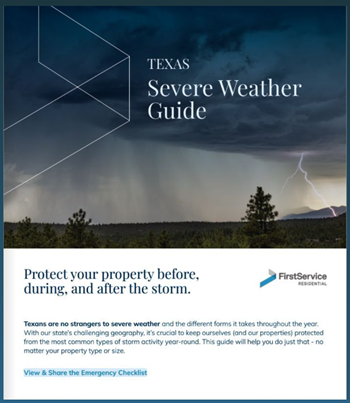Below, we’re listing the most common types of severe weather in Texas and explaining everything your homeowners association (HOA) or condo owners association (COA) needs to know about each. The more you can predict the unpredictable, the better you can protect yourself, your residents, and your property.
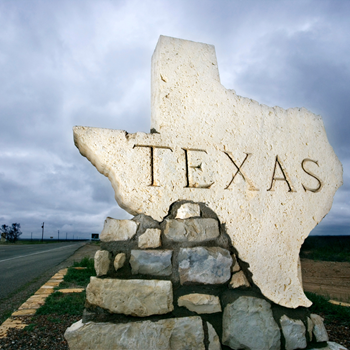
Severe thunderstorms
Thunderstorms can happen at any time but are most common in Texas’ spring and summer months. Severe thunderstorms are notorious for unleashing a host of challenges on communities and high-rises. Heavy rainfall, forceful winds, hail, and lightning all pose significant risks such as flash flooding, power outages, and structural damage to homes and buildings.What makes a thunderstorm “severe”?
The National Weather Service defines a thunderstorm as "severe" if it produces hail at least an inch in diameter or wind gusts over 58 mph; however, it's not uncommon for some storms to produce hail larger than softballs and wind gusts exceeding 100 mph. Such severe thunderstorms bring the possibility of tornadoes (one of the most perilous weather events), adding a layer of urgency to your HOA or COA preparedness strategies.
Recognizing the potential for destruction, it is crucial for HOA and COA boards to establish an effective communication system that is operational, inclusive of a National Oceanic and Atmospheric Administration (NOAA) Weather Radio. This is vital for accessing real-time storm advisories.
As far as storm preparedness, it's important to be attuned to wireless emergency alerts, which are automatically sent to cell phones, providing essential alerts and preparation instructions for imminent weather threats. If you’re tuning into weather updates in your own home or office, keep an extra supply of batteries and portable power chargers as a proactive measure to maintain communication and readiness.
A seasoned management company will have the infrastructure ready to deploy mass communications (on multiple platforms) for weather updates to residents, whether you live in an HOA or COA.
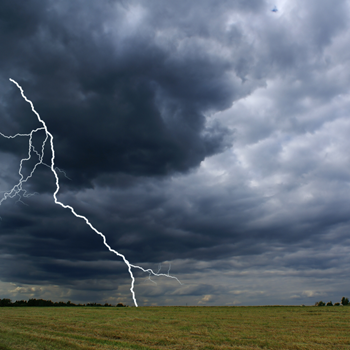
Severe thunderstorm watch vs. warning:
Severe thunderstorm watch means that the weather's setting up in a way that could lead to dangerous storms in or near our area. This is your cue to stay alert and be ready to move to safety if things look like they're taking a turn for the worse.
Severe thunderstorm warning is more urgent. It means there's a severe storm happening or about to happen, signaled by weather radar. This can even mean tornadoes are forming, so the advice here is clear: get to a safe place immediately and stay there until it's safe to come out.
Knowing how to act when a watch or warning is issued helps us better protect our communities and ensure storm preparedness for whatever severe weather comes our way.

Flash floods: torrents of Texas storms
When is a flood classified as a “flash flood”?
According to the American Meteorology Society (AMS), flash flooding is a “flood that rises and falls quite rapidly with little or no advance warning, usually as the result of intense rainfall over a relatively small area.” A flash flood occurs within 6 hours, and usually within 3 hours, of heavy rainfall and thunderstorms or infrastructure devastation, including levee breaks or mudslides.
What causes a flash flood?
Flash flooding in Texas is predominantly caused by sudden, heavy downpours that the state's soil and drainage systems can't absorb or manage quickly enough, particularly in urban areas where there are more impermeable surfaces. This type of flooding is especially perilous because it can occur with little to no warning, turning creeks, streams, and even streets into raging torrents within minutes, posing significant risks to both property and human life.
How can my association protect against flooding?
For Texas HOA and COA boards, storm preparedness and addressing the threat of flash flooding requires a multifaceted approach. This includes ensuring proper landscape drainage to facilitate runoff, installing or maintaining stormwater management systems, and developing an emergency action plan that includes timely communications to residents about impending severe weather and evacuation procedures. By taking these proactive steps, boards can better safeguard their communities against the sudden and destructive nature of flash floods.
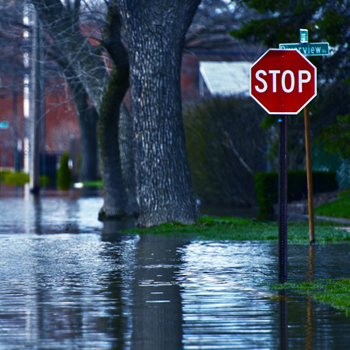
Hailstorms
According to National Oceanic and Atmospheric Administration (NOAA), hailstorms cause $1 billion in property damage each year.
Is resistant roofing worth the investment?
Yes, especially since Texas ranks #1 out of all states when experiencing significant hailstorms.
So, our association has invested in the proper safety measures to protect our buildings from hail. What should our board advise residents to do during a hailstorm?
At home: Stay indoors. Find a safe space with no windows or mirrors to take shelter.
Outside: Immediately cover your head and go inside or take shelter.
On the road: Stay inside your car. Pull over at a safe location (not under a bridge or on the side of a highway). Turn your back to the windows/sunroof and cover your head and back with blankets, jackets, or additional clothes to prevent injury.
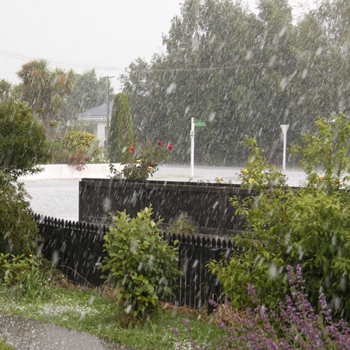
Tornadoes
Texas averages 137 tornadoes each year, more than any other state in the U.S. What separates Texas from the rest, particularly in the southeast region, is its proximity to the Gulf of Mexico. This proximity means a steady influx of moisture, setting the stage for tornadoes to form not just during the typical spring and summer seasons, but potentially all year round. That's why it's crucial for our communities to stay prepared for tornadoes, no matter the season.
When is tornado season?
For most of Texas, tornado season is April to June. They form when warm, moist air bumps into cold, dry air. This clash can lead to supercell thunderstorms, capable of spinning off tornadoes with winds that can zoom past 200 miles per hour. What makes tornadoes so dangerous is how unpredictable and devastating they can be. Uprooting trees, sending debris flying, and toppling structures are just a few risks posed by tornadoes. High winds and debris are especially dangerous for both houses and high-rises.
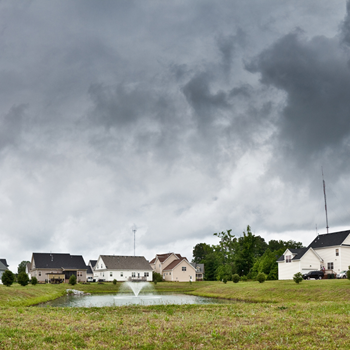
Tornado watch vs. warning:
Tornado watch means the weather is looking ripe for tornadoes, so you should have your emergency plans ready.
Tornado warning means it's go-time – act on your emergency plans immediately – because a tornado is either on the ground already or looking likely according to radar.
What should I do in a tornado warning?
A tornado warning is your cue to act fast and get to your safe place. In your house, your safe space should be at the lowest level of the home with no windows. If you’re in your car during a tornado, get out right away and head into the nearest building, or if there is no nearby building, take cover face-down in a ditch or lowest level of the ground.
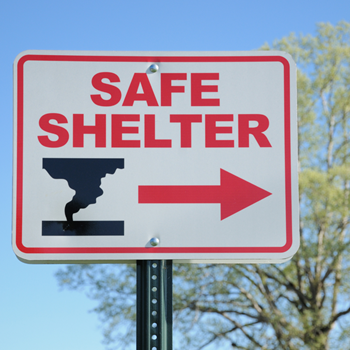
Hurricanes
Texas averages three to four hurricane landfalls per decade according to recent data.
How do hurricanes form?
These tropical cyclones form over warm ocean waters, typically when sea surface temperatures are above 80 degrees Fahrenheit, drawing energy from the moisture of the sea. They become dangerous as they approach coastal areas, bringing high winds, heavy rainfall, storm surges, and flooding—conditions that can lead to significant property damage, power outages, and even loss of life.
How can my association prepare for hurricanes?
For HOA and COA board members in Texas, storm preparedness in hurricane season entails reinforcing buildings to withstand high winds, clearing drainage systems to prevent flooding, and developing comprehensive emergency plans. These plans should include clear communication strategies to inform residents of impending threats, evacuation routes, and safety protocols. By taking these measures, boards can play a crucial role in protecting their communities from the devastating impacts of hurricanes.
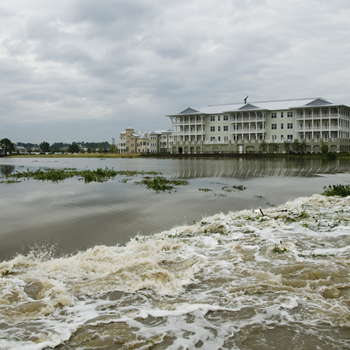
Hurricane watch vs. warning:
Hurricane watch is a heads-up from weather authorities that hurricane conditions are possible within your area in the next 48 hours. It's like a yellow traffic light, signaling you to slow down, be cautious, and prepare your plans just in case.
Hurricane warning means that hurricane conditions are not just possible, but expected, within the next 36 hours. This is the red light telling you to stop and take immediate action to secure your property and ensure everyone's safety.
Understanding the difference between these two can help you take the right steps at the right time to minimize the impact of a hurricane on your community.
Are hurricanes worse than tornadoes?
Although there are fewer hurricanes than tornadoes each year in Texas, a hurricane's horizontal scale is about a thousand times larger than a tornado and may persist over several days or even weeks. So don’t wait until it’s too late to prepare.
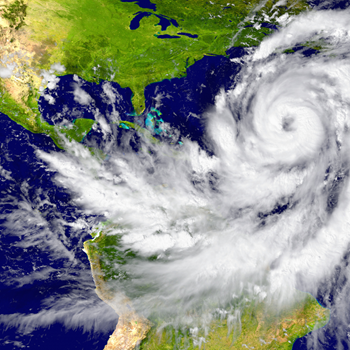
See our complete Hurricane Guide HERE.
Storm preparedness: FAQs & resources
What are dependable sources for preparedness during Texas storms?
-
Federal Emergency Management Agency (FEMA)
-
National Oceanic and Atmospheric Administration (NOAA)
-
National Weather Service (NWS)
-
Occupational Safety and Health Administration (OSHA)
-
Wireless Emergency Alerts (WEA) – free app you can download on your phone for real-time weather updates
-
Your local news/weather channels and their websites or social media pages.
See more sources here.
What emergency supplies should our board encourage residents to have on hand?
See the official emergency supplies checklist from our complete Severe Weather Flipbook here.

How can I help communities affected by severe weather?
Whether you give locally or nationally, there's plenty of organizations ready to assist those affected, like the American Red Cross, United Way, or Feeding America. You can also donate to the charity of your choice using the Charity Navigator.
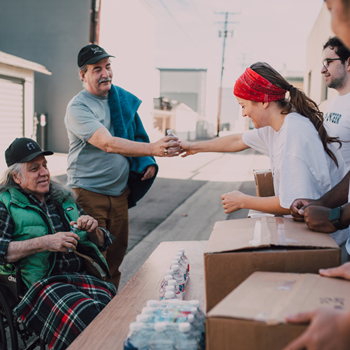
What can my association do to prepare for Texas storms?
Whether you're in a HOA, COA, or commercial property, when it comes to storm preparedness, the goal is always the same: making sure everyone – residents and employees – feels ready and safe, every step of the way. Here’s how:
Establish roles.
Having clearly defined roles will minimize confusion during the minutes that matter most. If you have on-site staff, make sure each staff member knows what his/her individual role is in an extreme weather event.
As for maintenance staff, members should work together to verify the stability of your property (equipment and safety systems), check for potential hazards, and make necessary repairs to prevent further damage. If your community doesn't have on-site staff, your management team will visit your property and secure reliable vendors to check your equipment.

Communicate with residents before, during, and after Texas storms.
Create an emergency action plan (EAP) outlining multiple scenarios, including guides for residents. Remind them to ensure their homeowner contact information is up to date. The best way to do this is via your community's website, social media, email, or text message. Your management company should also have the infrastructure in place to deploy any mass communications.
This will not only prepare residents, but it also gives you adequate time to test ideal forms of communication that provide real-time weather updates. Alerts should become more frequent and include additional information as storms are predicted and inch closer to your community.

Learn more about emergency training.
Examples of emergency training that could help save lives in case of a worst-case scenario:
-
Community Emergency Response Team (CERT) is a federal initiative that prepares people for different types of emergency disasters, in this case, severe weather. Learn more here.
-
The Emergency Management Institute (EMI) offers free-of-charge, self-paced courses for both the general public and those who have emergency management responsibilities. See how to sign up here.
-
CPR and First Aid training is essential, and we recommend it for your whole community. Your property management partner should have a list of vendors that are able to provide such training to your residents, or your can find nearby trainings through Red Cross here.
-
Did you know bystander CPR improves survival rates?
-
Nearly 70% of cardiac arrests happen outside of the hospital. The good news is that for those who have sudden cardiac arrest and a bystander initiates CPR quickly, about 45% of them can survive. (American Heart Association)
-
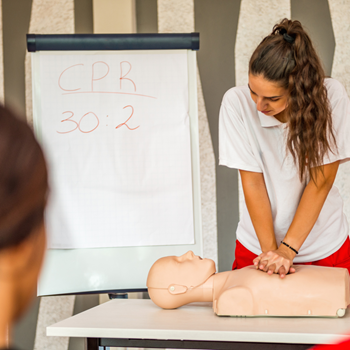
What’s the best way to protect my property from Texas storms?
Review exactly what your "acts of nature" insurance covers and pay special attention to anything your policy excludes. Some obvious coverages could be excluded in high-risk areas for severe weather activity. In that case, update your policy to ensure it covers most, if not all, storm-related damage, including fires, wind, lightning, and flooding.
There are often other storm-related acts that aren't included in basic coverage, like flooding or fallen trees. If necessary, review your policies with a trusted broker to ensure they provide enough coverage for your association. This is an essential part of storm preparedness as it reduces the impact of sticker shock that often comes with post-storm cleanup. Review your coverage options now, and you’ll thank yourself later.
Your management company should also be able to connect you with the right partners in the insurance industry to help your board find the most adequate coverage (at the most reasonable price) to fit your association’s needs.
Weather all Texas storms: your go-to Severe Weather Flipbook
See our comprehensive Severe Weather Guide Flipbook here, complete with emergency supply checklists and everything you need for storm preparedness.
Download the complete Severe Weather Flipbook.
FirstService Residential is simplifying property management.
Our FirstService Residential Texas family enjoys peace of mind knowing they’re in good hands. They can count on our 24/7 customer service for tailored solutions that take the balancing act out of property management. And our service-first philosophy means we don’t stop until what’s complicated becomes uncomplicated. To make life, simplified.If your association is not currently managed by FirstService Residential Texas, we would love to learn more about your community. Please click below and fill out a short Request for Proposal to set up a no-strings-attached conversation about how we can best support your association. We look forward to meeting you!
